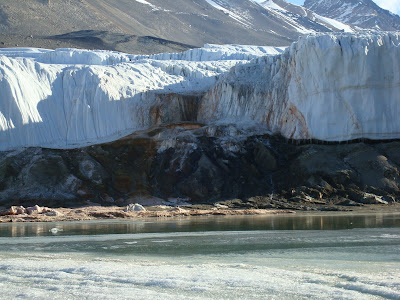 Antarctica is located at the bottom of the globe. It is one of the two places on earth that sees almost exactly six months of winter and six months of summer. The seasons are dictated not by snow, which we see year round, but rather by the presence or absence of the sun. In the summer the sun is in the sky for more hours than in the winter, the same is true all over the world. Right now in Oregon the sun is staying in the sky for an extra ~2.5 minutes longer each day, so the days are getting longer. Here in Antarctica the opposite is happening.
Antarctica is located at the bottom of the globe. It is one of the two places on earth that sees almost exactly six months of winter and six months of summer. The seasons are dictated not by snow, which we see year round, but rather by the presence or absence of the sun. In the summer the sun is in the sky for more hours than in the winter, the same is true all over the world. Right now in Oregon the sun is staying in the sky for an extra ~2.5 minutes longer each day, so the days are getting longer. Here in Antarctica the opposite is happening.
And there are good things to look forward to. First of all when the sun sets we will finally be able to see stars! Also with the darkening skies we get to see sunsets and sunrises, and most importantly we may be able to see the Aurora Australis or Southern Lights.
Aurora Australis are formed by a group of charged particles that reach the Polar Regions from the sun. Through a series of collisions these particles increase their energy and then lose excess energy in the form of light. The reason these lights are often seen in polar regions is that a wind and very cold temperatures are needed to see the brilliant colors; however, they can be seen as far south as Montana.








+072.jpg)




 All of these things together lead scientists to believe that the changes in the lakes of the Dry Valleys are a good representation of the changes that could occur in our world if global warming continues.
All of these things together lead scientists to believe that the changes in the lakes of the Dry Valleys are a good representation of the changes that could occur in our world if global warming continues.+064.JPG)



